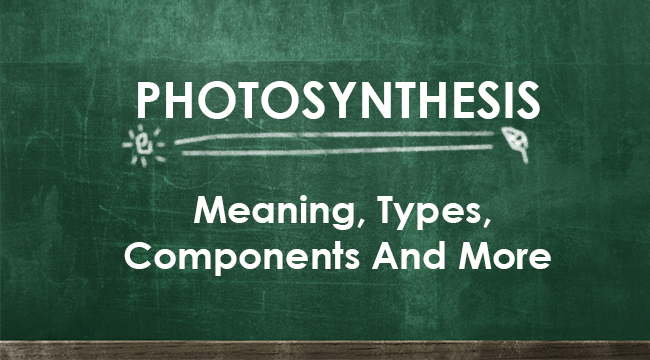PHOTOSYNTHESIS – Meaning, Types, Components And More
PHOTOSYNTHESIS – In this topic, we will talk about photosynthesis, the process, the two kinds, essential components, and more.

Meaning
It is the process used by plants, algae and certain bacteria to harness energy from sunlight and turn it into chemical energy.
There are two types of photosynthesis:
- Oxygenic – the most common and is seen in plants, algae and cyanobacteria. It involves the transfer of electrons from water to carbon dioxide, to produce carbohydrates. At the same time, oxygen is produced as well.
- Anoxygenic – This type does not use water but instead use electron donors to do the same thing like the other one. Aside from that, it does not produce oxygen, hence, the name anoxygenic.
The Essential Ingredients
- Pigments – these make the color of the plants algae and bacteria, but they are also responsible for effectively trapping sunlight. There are three main groups:
- Chlorophyll – green pigments that trap blue or red light.
- Carotenoids – red, orange or yellow-colored pigments absorb bluish-green light.
- Phycobilins – red or blue pigments absorb wavelengths of light that are not as well absorbed by chlorophylls and carotenoids.
- Plastids – these are organelles that contains pigments or has the ability to store nutrients.
- Antennae – they are pigment molecules that are associated with proteins, which allow them the flexibility to move toward light and toward one another.
- Reaction centers – they are pigments and proteins that convert light energy to chemical energy and begin the process of electron transfer.
Types of Process Reactions
- Light-dependent Reactions – also known as light reactions, it is a type where a photon of light hits the reaction center, a pigment molecule such as chlorophyll releases an electron. The end result is the release of oxygen into the atmosphere.
- Light-independent Reactions – also known as dark reactions or the Calvin cycle, involves three steps: carbon fixation, reduction and regeneration, and uses water and catalysts.
READ ALSO: PLANT LIFE CYCLE: The Six Stages Of A Plant And Four Cycles
